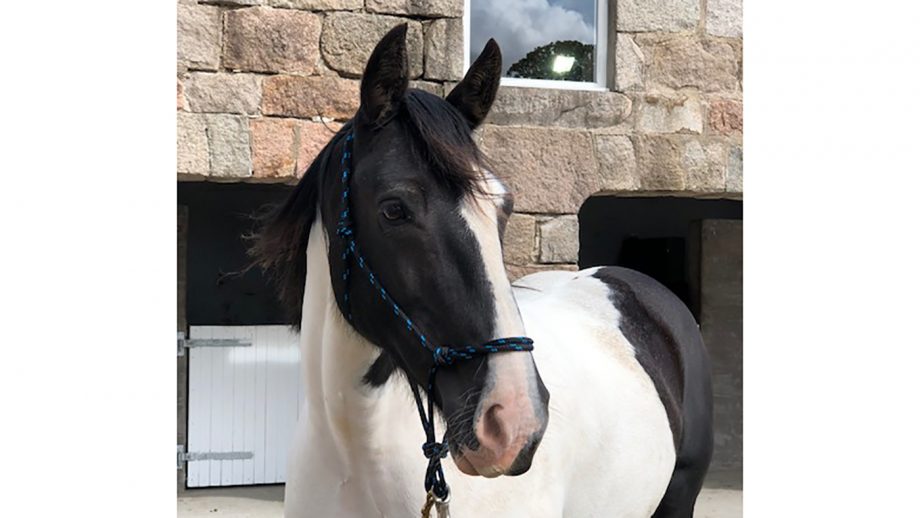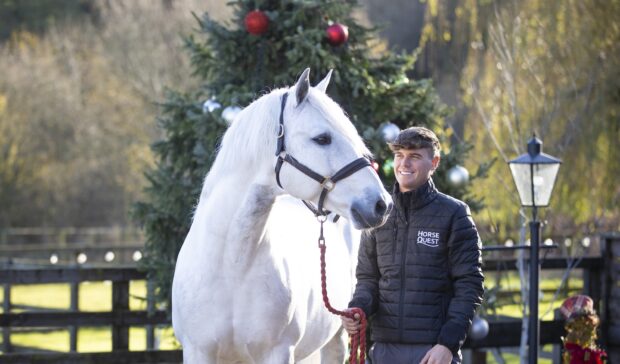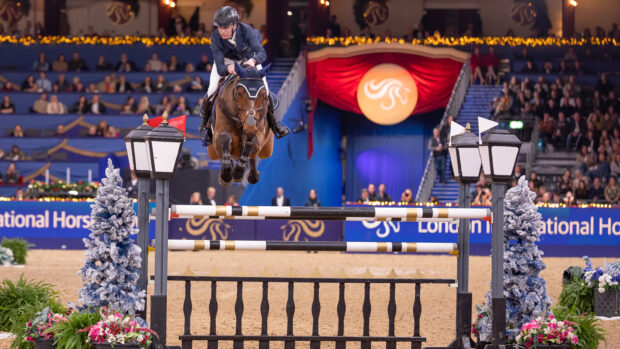Every day, our horses work for us tirelessly, teaching riding skills, providing therapy and promoting equestrianism. In this series, we meet some of the horses and ponies who are Britain’s unsung heroes, such as George of the Household Cavalry
Ask any tourist from anywhere in the world what he’s hoping to see in London, and the chances are that ‘the Changing of the Guard’ will be on the list. The tradition is an iconic part of British history and has taken place outside Buckingham Palace for over a hundred years.
Although the image of a horse and soldier in full kit is the one we associate with the Household Cavalry, there’s much more to the Regiment than that. The Household Cavalry is made up of two regiments, the Life Guards and the Blues and Royals and has an armoured reconnaissance unit as well as the more famous mounted unit. The roots of the Household Cavalry go back to the 17th Century, when they were first formed as the King’s bodyguard, and part of their current role is to protect the Queen on State occasions. They’re now an essential part of such occasions, including the State Opening of Parliament, the Lord Mayor’s parade, the Queen’s Birthday Parade and royal weddings, and play a vital role in keeping Britain’s heritage alive.
“Everyone in the regiment is a fully trained, frontline soldier,” says riding instructor and Corporal of Horse Rob Bishop. “Around 90% of our soldiers will serve in the armoured regiment as well as the mounted one. They serve around two years in each regiment, and the average age of our mounted soldiers is early 20s. Some of them come to us being able to ride already, but most can’t — we give them a crash course of 12 weeks, it’s pretty intense! When their training’s finished, they go into a troop and they could be riding any of the horses from day to day.
“The regiment currently has around 250 horses. At any one time, some will be off at our training wing at Windsor to be used in lessons, some might be resting and some will be here in Knightsbridge — at the moment, the bulk of our horses are here as we’re getting ready for the State Opening of Parliament.

George on parade
“As you can imagine, our horses have to have some pretty special qualities. They have to be at least 16.2hh, and they have to be completely black in colour. A lot of our horses come from Ireland, they tend to be Irish Sports Horses. They have to be completely at home with noise and in traffic — not many people would ride their horses through London at 7am, often leading another horse, but we do it every day! Our horses also need to stand still for long periods of time, often while there’s a lot going on around them. We build their training up a little at a time, and we also have a simulation sound system in our indoor school to help desensitise them.
“George [pictured throughout] came to us from Ireland in 2007 as a nervous six-year-old, and like all our horses was ridden by an instructor until his training was complete. They need to get used to being ridden in full ceremonial kit, which is what catches a lot of them out — the scabbard can flap around, the plumes can scare them, they might not like the rider holding a sword. There’s also the weight of kit to get used to, as it can add an extra four or five stone. That’s when we really know if that horse is going to make it, and George took it in his stride. His first State event was the Queen’s Birthday Parade of 2007, then he joined the Blues and Royals. Our horses aren’t formally named until they ‘pass out’, and we name them by letter according to year — 2007 was the ‘G’ year.

George on the Major General’s parade
“George really is the archetypal Household Cavalry horse as he’s a jack of all trades and can turn his hoof to anything. He’s one of only nine officer’s chargers, which means he has to be bold enough to lead parades and be in front. He’s a good jumper, and has competed at the Royal Windsor Horse Show in the military class, and he’s been hunting, as well. He’s one of our musical ride horses, and is one of only six ‘lay down horses’ (the horses who lie down as part of the display). Lying down isn’t a circus trick, it’s a tactical strategy dating from the time when soldiers would lie their horses down on the battlefield, hidden by long grass, so they could leap into the saddle and preserve the element of surprise. George has been all over the world, including three weeks in Abu Dhabi in 2009 as part of the musical ride team.
Continued below…

Britain’s unsung equine heroes: Polly — ‘she helps people become proud of who they are again’
Every day, our horses work for us tirelessly, teaching riding skills, providing therapy and promoting equestrianism. In our new series,

Britain’s unsung equine heroes: the RDA pony — ‘it can be a lot for any horse to cope with, but Ted took to it immediately’
Every day, our horses work for us tirelessly, teaching riding skills, providing therapy and promoting equestrianism. In this series, we

Subscribe to Horse & Hound magazine today – and enjoy unlimited website access all year round
“Our horses tend to retire in their mid 20s, and they’ll go onto a retirement home with one of the equine charities, or sometimes they’re adopted by former riders or even members of the public. George is such a kind, trusting horse, he’s a firm favourite here at the regiment and we’d love to see him continuing to serve Queen and country for years to come.”
For all the latest news analysis, competition reports, interviews, features and much more, don’t miss Horse & Hound magazine, on sale every Thursday




